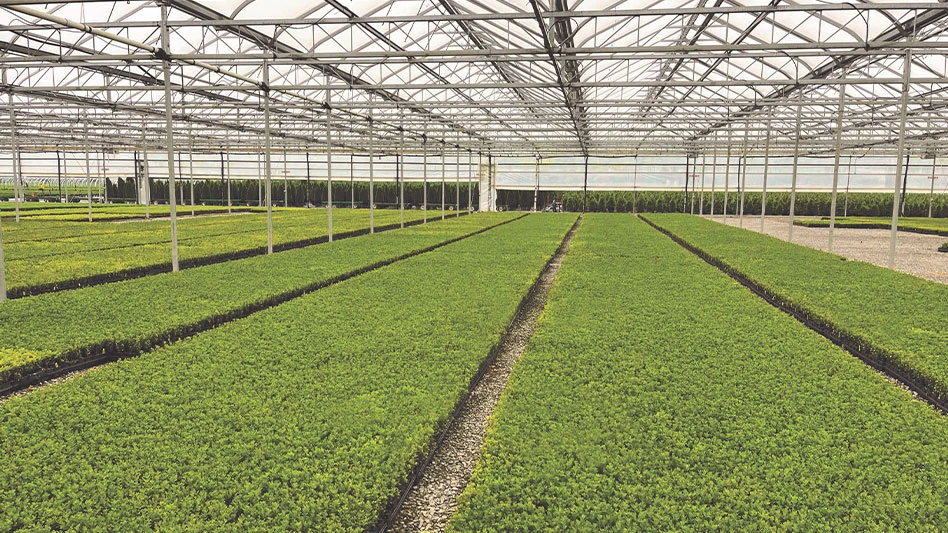

Frederic Gagnon, Lambert Peat Moss agronomist, says the substrate is an extremely important factor for growers that produce ornamental plants, including nursery stock like trees and shrubs.
The reason the substrate is so important is that it acts as the anchor of the plant but also as a reservoir, holding the nutrients and water to feed it. Each type of substrate includes different attributes. These include physical characteristics, the fertility and sometimes special requirements as requested by the grower.
“Even if new components are now available on the market, sphagnum peat moss is still the first choice in the growing media world,” Gagnon says. “It’s the core of your substrate because of its qualities and consistency.”

Whether you are blending your own media or working with an already ready-to-use complete mix, Lambert can help you with all the aspects that a quality substrate should include. The physical characteristics of a growing substrate of any type is the first item to check.
“In my mind, the first and main factor that is the basis of every substrate are its physical characteristics,” Gagnon says. “You should be able to get or produce a mix that will be consistent as well as suitable and efficient for your containers’ sizes and the climate at your location.”
To do so, you must make sure to get the peat grade offering the particles sizes you need. Growers need the appropriate ratio of porosity, for drainage and oxygen availability and water retention. Each grade of screened peat is dedicated to a specific end use, from Ellepot’s line of very clean mixes to very coarse, high porosity ones, including extra-coarse nursery mix. Crops, containers or tray sizes, type of irrigation management, location, or time of year — all these details are useful in determining which product is right for the grower.
Lambert offers a wide variety of options from its classic EPM all-purpose nursery mixes to more specific blends. Many include EcoPeatPlus+®, which is an OMRI-listed wood fiber exclusive product that is added to sphagnum peat moss. EcoPeatPlus+® is the perfect component to increase pot stability. It maintains the mix structure, virtually eliminating the media shrinkage that is so crucial for medium to long-term nursery productions. In addition to increasing pot stability, EcoPeatPlus+® can also act as a weed barrier if top-dressed on containers.
“It’s relatively heavy, so it’s not blown by the wind and it stays there,” Gagnon says. “The surrounding area stays clean and it doesn’t attract the birds.”
Fertility is the next step. As a grower, you want to hit the fertility level of your mix right on target.

Gagnon says growers have the option to control the entire process from the beginning. They could choose no starter charge or a small fertilizer boost to give the initial kick to the crop before backing off. They can then adjust the fertilization depending on weather conditions.
At the other end of the spectrum, some Lambert mixes offer a controlled release fertilizer that will last part or all the season. CRF’s are available in different durations and formulations.
“If you are utilizing CRF’s, the advantage of having it already blended is the consistency of the final mix because you can rely on the accuracy of the soil mixers equipment,” Gagnon says. “CRF’s are costly material, so you want to take advantage of their efficiency to the maximum.”
An often-overlooked detail that can have a large impact is how certain specific crops may have special requirements. Gagnon says that though this part of the process is often considered “fine-tuning” it can make a difference between whether your production is profitable or barely covers its cost.
For example, you may need a low pH mix for hydrangeas and azaleas, or a very high drainage mix for special productions.
“We are specialized to make those adjustments, so don’t hesitate to ask for it,” Gagnon says. “It’s rare that one size fits all.”
For more: www.lambertpeatmoss.com
Get curated news on YOUR industry.
Enter your email to receive our newsletters.

Explore the April 2023 Issue
Check out more from this issue and find your next story to read.
